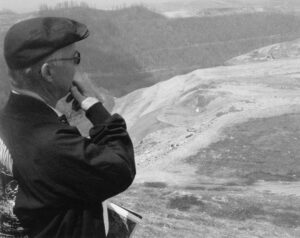WHITESVILLE, WV—During the last coal boom in Appalachia, a miner could quit a job in the morning and find a better one in another hollow before the next shift started. Randy Sprouse, until recently a tavern operator at Sundial, WV, was a young man then, and he changed jobs more than once without missing a day’s work in the process.
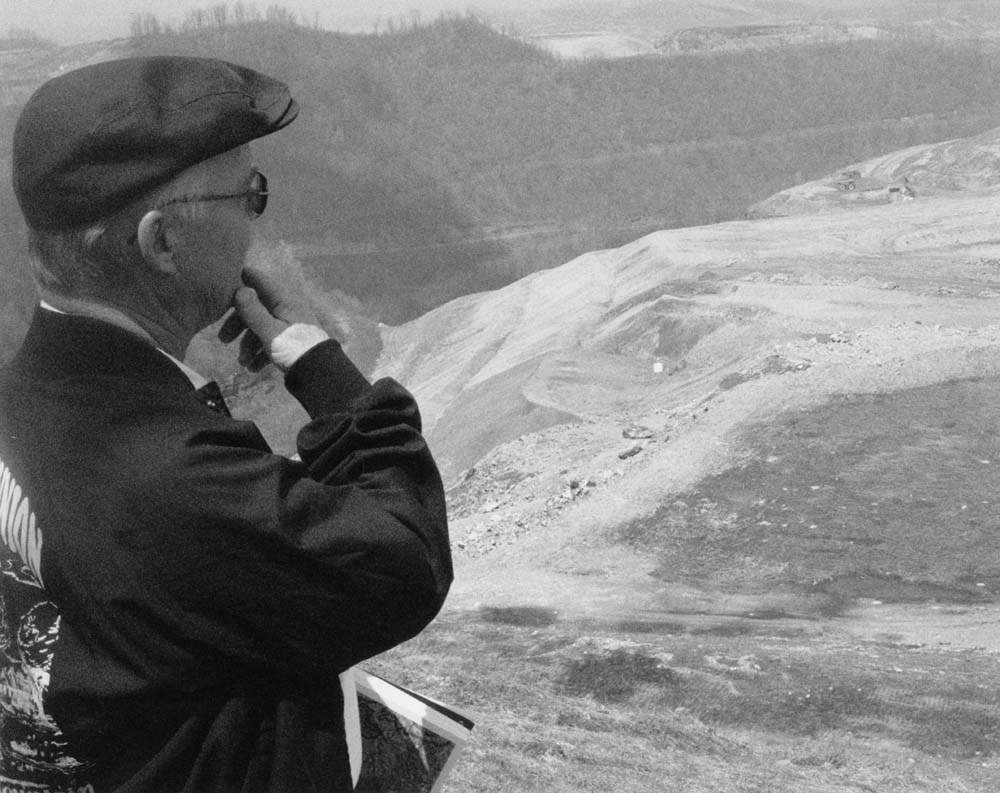
During those fabulous days in the mid-seventies, thousands of men who had left the mountains came home from distant cities to dig coal. In West Virginia, Virginia, Kentucky, and Tennessee, small truck mines that had been abandoned for years were reopened. Nearly anybody who had or could borrow money to buy a dump truck and a road grader could become a strip mine operator. Bootleggers mined without permits and got good money for gray mixtures of coal, slate, and rock. Spot market prices soared to nearly $100 a ton and suddenly-rich independent operators lived in opulence, bought luxury cars for their wives, and concluded business deals on the golf course.
There was never a time quite like the mid and late seventies. The Arab oil shocks drove gasoline prices to record levels and eventually forced Americans to stand in line at the pump. The crises fomented an extraordinary burst of national resolve, and with expert assurances that America had enough coal to last into the middle of the next millennium, energy independence became a national battle cry. Consumers switched to economy cars, turned off air conditioners, and bought smaller light bulbs. OPEC had stepped on the tail of a dragon and the roar was music in the coal fields.
Saturday nights in Whitesville were reminiscent of the good old days after World War II when it was hard to get through the crowds on the sidewalks. Miners’ families from communities up and down the Big Coal River—Seth, Comfort, Sylvester, and Sundial—and from Marfork, High Coal, and Seng Creek Hollows came to shop, take in the movie, and catch up on the news. You could forget finding a parking place in the middle of town.
“You had two or three clothing stores, shoe stores, furniture stores, a whole bunch of restaurants, taverns, a movie theater, and a bowling alley,” Sprouse would recall more than 30 years later. “Anything you wanted, you had right there in Whitesville. You didn’t have to leave Whitesville for anything.”
Most of that has been gone for years. The sidewalks of Whitesville are usually empty. Vacant stores dot the town’s main drag and windows are covered with dust from coal trucks that rumble through night and day. Traffic lights work intermittently. Parking meters were removed long ago. One would never guess, from looking at Whitesville, that an incipient coal boom is underway even now—or that Boone County, where Whitesville is situated, is the most productive coal county in West Virginia.
Skyrocketing natural gas prices, flickering lights in California, and friendly words from the Bush White House in early 2001 provided an overnight elixir for the coal business. Spot market prices doubled to about $50 a ton, and on Wall Street stocks marched upward as the Bush administration reinstalled the ever-illusive comprehensive energy strategy as a national imperative and made production the mantra of its energy policy. The National Mining Association promptly forecast record yields ahead for the nation’s coal fields.
For the first time in years, mountain newspapers carried help wanted ads seeking miners.
But having been passed over by the “Goldielocks economy” that much of the United States enjoyed through the 1990’s, coal field towns like Whitesville are apt to be left out of the industry’s promised comeback too. Old hands who have watched good times come and go now caution the younger generation that this will not be their father’s coal boom. This time entrepreneurs with road graders and dump trucks won’t become instant strip miners. Equipment costs too much. Safety and environmental regulations demand too much. And Appalachian expatriates are less inclined to come home—salaries in distant automobile plants are too good, the neighborhoods of far—off suburbs too comfortable, the coal seams back home too thin, and union jobs in the mines too few.
Coal industry profits and coal town prosperity have never been synonymous, though residents of coal towns nearest the mines did eventually benefit from the “trickle down” in the good times of the seventies. Nowadays, however, social activists and environmentalists increasingly see industry success as antithetical to community welfare.
Mining is now an enterprise that takes place on a vast scale in the mountains. It has outgrown human dimension. The fraternity of men who work underground is gone and camaraderie of coal towns has faded. In places like Whitesville, mechanized corporate mining intimidates its neighbors with noise and dust, and flouts its political influence. Companies such as Massey Energy Company, the Richmond, Virginia-based giant that dominates the Coal River Valley, hire their non-union workers from out of county, or even out of state, to inhibit socializing that could lead to unionizing.
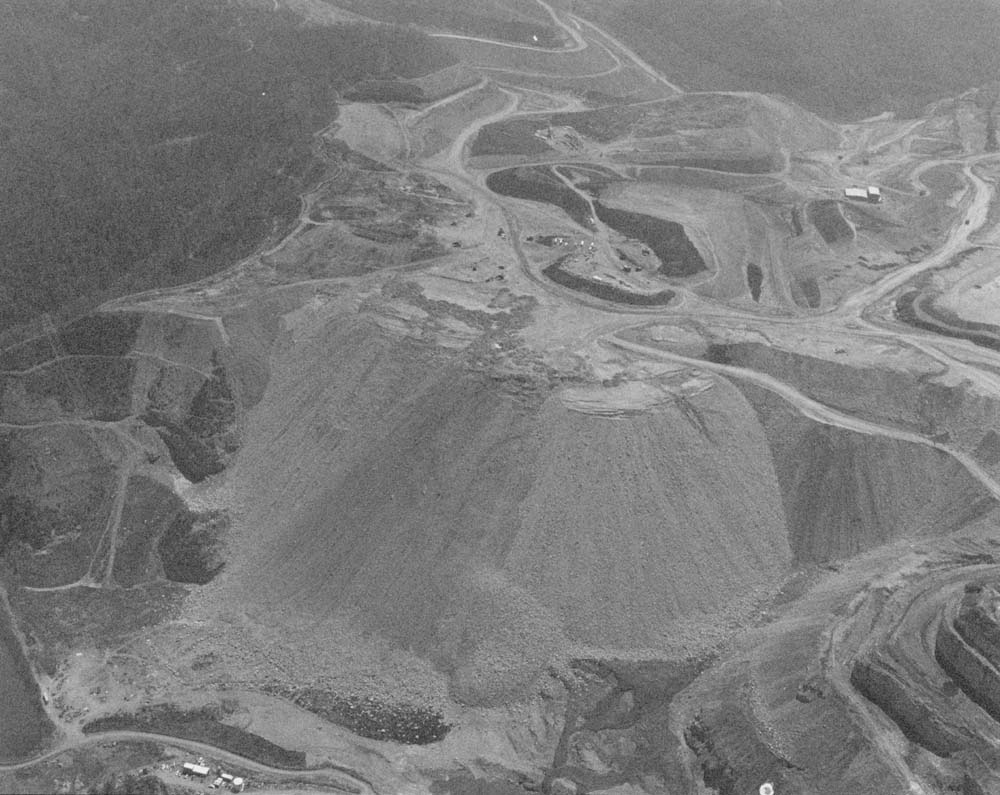
Such tactics have estranged communities and union families not only from individual companies but from the industry itself, making some former miners openly sympathetic to environmental protests, turning some into outright activists, and leaving many deeply cynical, believing that their state and its politics are effectively controlled by coal money. When a panel of the National Academy of Sciences recently came to Whitesville for a public hearing on coal waste impoundments, Julian Martin, a retired teacher who grew up not far from here, warned: “Here, you are going to meet the most cynical people you will ever see outside the Third World.”
In communities near coal preparation plants, there is pervasive anxiety over waste impoundments dammed-up in hollows that are honeycombed with abandoned underground mine works. Around mountaintop removal projects, residents see explosions ruin their wells, crack the walls and foundations of their houses, and send rocks flying off mining sites. Aggrieved coal field citizens and environmental groups have begun to sue not only coal companies, but government regulators in efforts to stop mountaintop removal projects, enforce reclamation laws, tighten mine permitting, control dust, protect streams, and recover damages.
But more often than not, citizens still capitulate, as they always have when they stood in the way of a coal seam. In Logan County, across Cook Mountain from Whitesville, the community of Blair has seen all of its businesses close and most of its residents move away. Some took the first offer from Arch Coal Company; some got lawyers and negotiated; others simply left because they could no longer abide the noise and dust from Arch’s massive mountaintop removal project and the prospect of another one on a neighboring ridge. “When Arch came in here, the first thing they did was set out to systematically destroy the community by buying out all the businesses,” says Larry Bartram, a disabled miner who remains. “After they bought out the businesses, people began to move because you have to go 12 miles to get a loaf of bread or a quart of milk.”
Bartram’s wife and daughter were among those who left. He remains, he says, because the price Arch has offered for his house is not enough for him to buy something comparable somewhere else.
It is not unusual for nuisance communities to be brushed aside. About the same time Blair was being depopulated, 200 families were being pushed out of Dehue, a former company coal camp, to clear the way for a new long wall mine in the area. Unlike the citizens of Blair, Dehue residents had no opportunity to negotiate. They were renters in an old company coal camp, and were simply evicted by a land company. The last 13 houses and trailers were vacated last May and, in a long, curving hollow that was once home to 1,500 families, another community ceased to exist.
Although such places have been evacuated for decades, mining operations are increasingly encroaching upon areas where residents have middle class aspirations and no remaining cause to cooperate with the coal company. The result is a litigious atmosphere, made conspicuous by two huge confrontations pitting local residents and environmentalists against mining companies.

First, joined by the West Virginia Highlands Conservancy, several die-hard residents of Blair went to court to stop a new 3,000-acre mountaintop removal project planned by Arch Coal. U.S. District Judge Charles Haden handed down a ruling, which the industry and supportive politicians called a potential death knell for coal. Mountaintop removal projects that bury perennial or intermittent streams beneath rock and dirt blasted and dumped off the mountainside, Haden ruled, are illegal. The decision was overturned by a three-judge panel of the U.S. Court of Appeals, but the plaintiffs have appealed for a hearing by the full court.
With the mountaintop removal debate still blazing, the rupture of a 72-acre coal waste impoundment near Inez, Kentucky revived memories of the 1972 Buffalo Creek disaster, set off an avalanche of lawsuits and triggered no less than four federal and state investigations. The impoundment broke out when the roof of an underground mine collapsed, allowing 250 million gallons of chemically-tainted slurry to flow into two mountain streams. Before reaching the Tug Fork of the Big Sandy River, the tar-like sludge flowed across bottom land, destroying gardens, lawns, and shrubbery of a Coldwater Creek neighborhood locally known as “Hollywood” for its upscale neatness. Virtually all aquatic life died in a 36-mile stretch of the river, and residents of Inez and surrounding communities complained of skin rashes, gastrointestinal distress, and worse.
The Kentucky debacle came as Massey Energy, owner of the failed impoundment at Inez, prepared to enlarge its Brushy Fork impoundment near Whitesville, notwithstanding warnings that the Brushy Fork area is also honeycombed with underground mines going back a hundred years. The enlargement, since approved by the West Virginia Department of Environmental Protection, calls for raising the height of the dam to more than 900 feet, giving the storage pool a volume of more than 6 billion gallons.
The rise of mountaintop mining, the construction of giant impoundments, and the use of outsized preparation plants equipment have been driven by a relentless quest for efficiency.
Appalachian coal—more than half still comes from underground mines—is threatened by competition from western strip mines where giant seams can be strip mined for as little as $3.50 per ton. Because of the cheap western coal, mountaintop removal suddenly boomed in central Appalachia in the 1990s. Trucks and power shovels have grown to gargantuan sizes, and drag lines swing shovels holding up to 100 cubic yards of rock. Mountaintop mines that reduce ridges and peaks by hundreds of feet now sprawl across more than 2,000 acres. An estimated 400 square miles of southern West Virginia mountains and ridges have been leveled and 1,000 miles of streams buried beneath debris blasted, shoved, and dumped into narrow valleys.
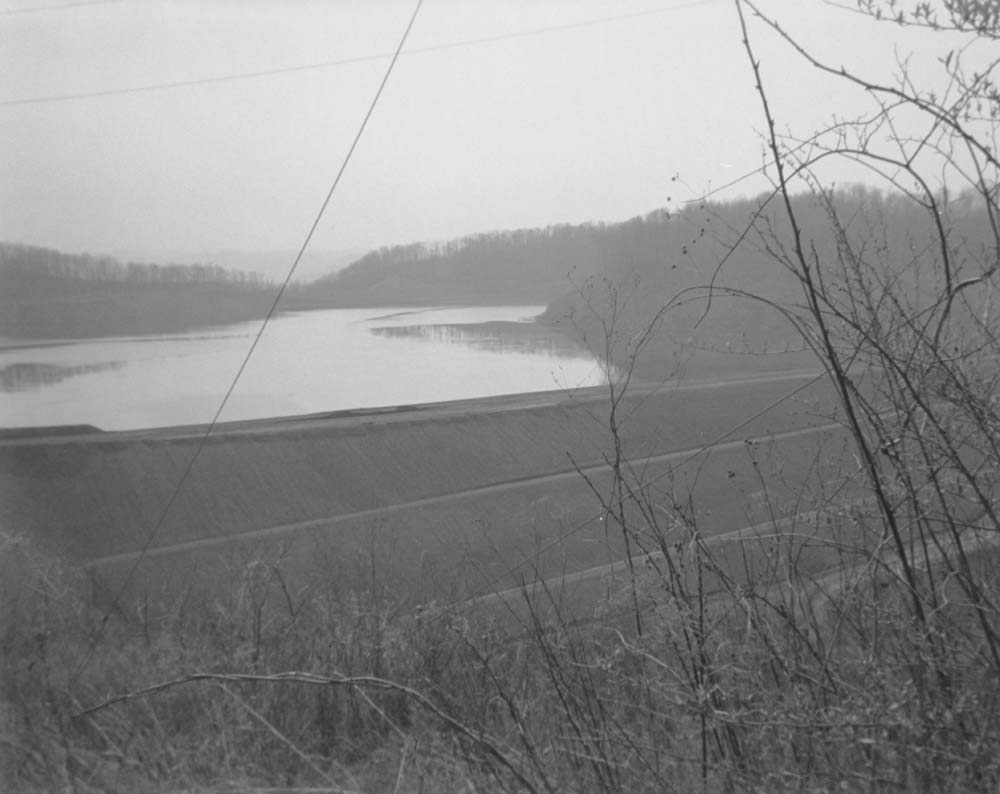
The impact of scale and automation in both underground and surface mining is reflected by dramatically declining numbers of workers who produce ever increasing tonnage. Sixty years ago, 130,457 miners produced 126.6 million tons of coal in West Virginia. In 1979, it took 58,565 miners to produce 112.3 million tons. Twenty years later fewer than 15,000 miners produced nearly 170 million tons.
Still the efficiency of Appalachia’s most productive mines pales beside that of mines in the West. In Wyoming’s Powder River Basin, companies operate 400-ton trucks and shovels that can scoop 200 cubic yards in a bite. In 1998, Arch Coal Company’s Black Thunder Mine in Wyoming produced more than 42 million tons. By comparison, the largest mine in Appalachia, Arch’s Mountaineer, a longwall mine in southern West Virginia, produced 7.4 million tons.
Even with the cost of transportation across half the continent, eastern utilities are finding Wyoming coal attractive, and East-West competition intensifies with each passing year. “A few years ago, the Mississippi River was sort of the demarcation,” says Benjamin Greene, chairman of the West Virginia Coal Association, “and then it became the Ohio River, and now you have western coal right at our back door here.” The Tennessee Valley Authority is among the eastern users of Wyoming coal, and one steam plant of the Alabama Power Company is using Wyoming coal exclusively.
There are two striking ironies in what is happening in the central Appalachian coal fields. The first is that the federal Clean Air Act, perhaps the most successful of federal environmental protection laws, has contributed indirectly to the rise of mountaintop removal by increasing the value of low sulfur coal, which occurs in seams that can be reached by stripping away mountaintops.
Equally ironic is the likelihood that environmental regulations loathed by coal companies could save the industry from itself.
The last coal boom collapsed when scarcely-regulated coal companies, moved by soaring prices, developed the ability to mine 250 million tons per year more than they could sell. In the face of a coal glut, prices collapsed, mines closed, and once more young men and women left their home towns in central Appalachia in search of jobs. Logan and Mingo Counties in West Virginia and Buchanan County, Virginia suffered double digit population losses in the 1990’s.
Kentucky’s 2,000 operating mines dwindled to fewer than 500. West Virginia’s mining employment, which stood at nearly 63,000 in 1978, fell below 15,000 in 1999.
Largely because of more concern for the environment and more complex permitting procedures, there is not apt to be a huge surge in over production this time. During the first half of 2001, presumably the beginning of the Bush coal boom, Appalachian production increased by 4 percent, while Wyoming production increased by 8.4 percent.
And even as coal companies advertised for miners and made mining equipment purchases long deferred, a study by the University of Kentucky’s Center for Business and Economic Research concluded that the Appalachian coal business will play a diminishing role in the region’s future. In the coming decade, it said, the industry’s earnings and employment in central Appalachia were apt to decline by 25 to 30 percent.
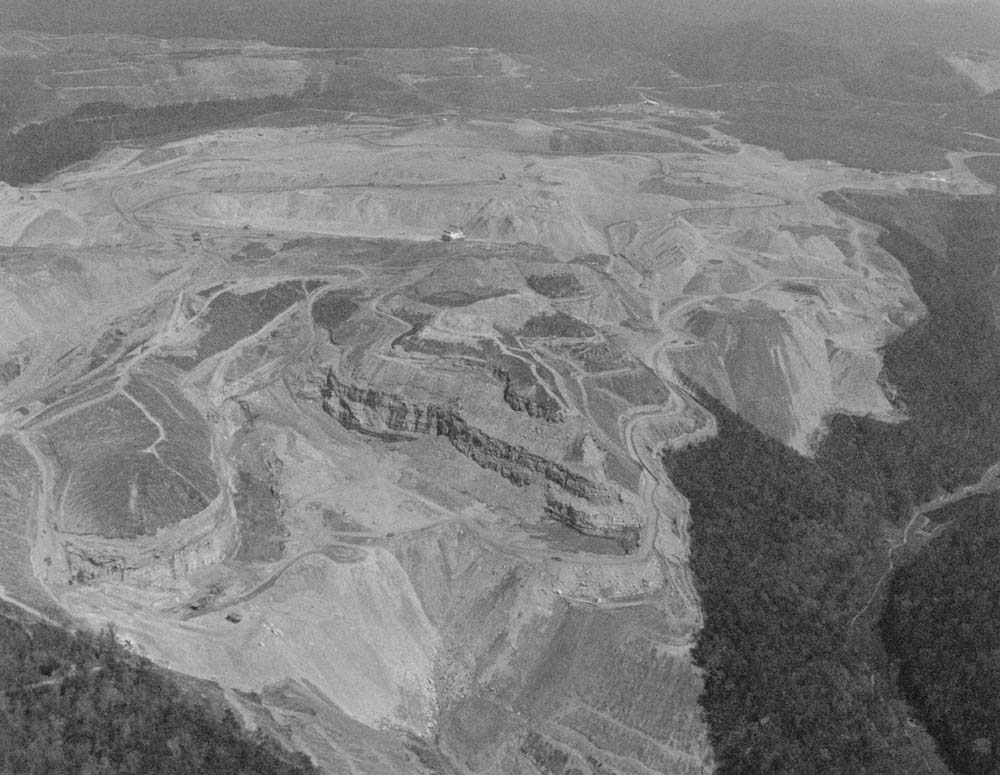
Randy Sprouse is no longer in the coal fields. After losing his job during the collapse of the 1980’s, he could never find another mining job in the Coal River Valley. He was a union man and there were fewer and fewer union jobs. He also had been named in a lawsuit that Massey Energy filed against the United Mine Workers, after a rowdy demonstration at Massey’s non-union Elk Run Mine destroyed company property. So he operated a down-at-the-heels tavern at Sundial, joined Coal River Mountain Watch, the valley’s local environmental organization, and became its executive director.
But in the spring of 2001, needing to get his money out of the tavern, he finally accepted an offer from the Goals Coal Company, the Massey Energy subsidiary at Sundial, sold them his place and moved more than 100 miles away.
©2001 Rudy Abramson
Rudy Abramson, a former reporter for the Los Angeles Times, is examining the West Virginia coal economy.

